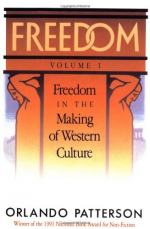
|
| Name: _________________________ | Period: ___________________ |
This test consists of 15 multiple choice questions and 5 short answer questions.
Multiple Choice Questions
1. Augustus' rule is at the expense of whose civic freedom?
(a) The lower classes.
(b) The middle classes.
(c) The slaves.
(d) The upper classes.
2. Where are the greatest conversion rates?
(a) In regions where slavery predominates.
(b) In upper class societies.
(c) In middle class societies.
(d) Among the Hellenic thinkers.
3. What happens once Christianity appears?
(a) It stays in the Middle East.
(b) It spreads quickly through Greece.
(c) It spreads rapidly throughout the Roman Empire.
(d) It spreads slowly throughout the Roman Empire.
4. In what forms do these rights or freedoms come?
(a) Events.
(b) Monetary gain.
(c) Leadership.
(d) Charters.
5. Augustine, like Paul, is also concerned with the role of _______________ in Christianity.
(a) Peace.
(b) Slavery.
(c) Compromise.
(d) Freedom.
6. As what do his views become known?
(a) The theology of freedom.
(b) The theology of Christ.
(c) The theology of monotheism.
(d) The theology of Christianity.
7. What parts of the Roman economy are slave-based?
(a) Urban.
(b) Rural.
(c) Both urban and rural.
(d) Neither urban nor rural.
8. Why does Paul say people suffer?
(a) People suffer because of fate.
(b) People suffer because of others.
(c) People suffer because of past life mistakes.
(d) People suffer because of their sins.
9. What is one of the different periods of serfdom?
(a) Liberal serfdom.
(b) Conservative serfdom.
(c) Feudal serfdom.
(d) Ruler serfdom.
10. How do Jesus' followers reply to the critics?
(a) Jesus knows all the critics.
(b) Jesus has died.
(c) Jesus dies for the good of mankind and is resurrected.
(d) Jesus will return in three days.
11. From what does the development of the concept of freedom in Rome result?
(a) A smooth transition.
(b) A series of debates.
(c) A contrasting jump from slavery to freedom.
(d) A series of struggles.
12. In what do plebeians have more faith?
(a) One-man-rule.
(b) No-man-rule.
(c) Many minor rulers.
(d) No rulers.
13. What is one of the phases?
(a) The baptism of John.
(b) The Crucifixion.
(c) The prophetic phase of Jesus and the Jesus movement.
(d) The birth of Jesus.
14. With whom do the patricians conflict?
(a) The metics.
(b) The plebeians.
(c) The pueblos.
(d) The euclids.
15. What is sin considered to be?
(a) An influence of Satan.
(b) Something from which only slaves suffer.
(c) A form of spiritual slavery that humans are freed from.
(d) From Adam and Eve.
Short Answer Questions
1. Who has the most freedom in terms of the sovereignal aspect of freedom?
2. How does Augustus change his image and his manner of rule during his reign?
3. According to Augustine, from where does freedom come?
4. The practice of manumission and co-optation means the native born Romans, or the ruling class, are what?
5. What does Jesus not intend to do?
|
This section contains 487 words (approx. 2 pages at 300 words per page) |

|




